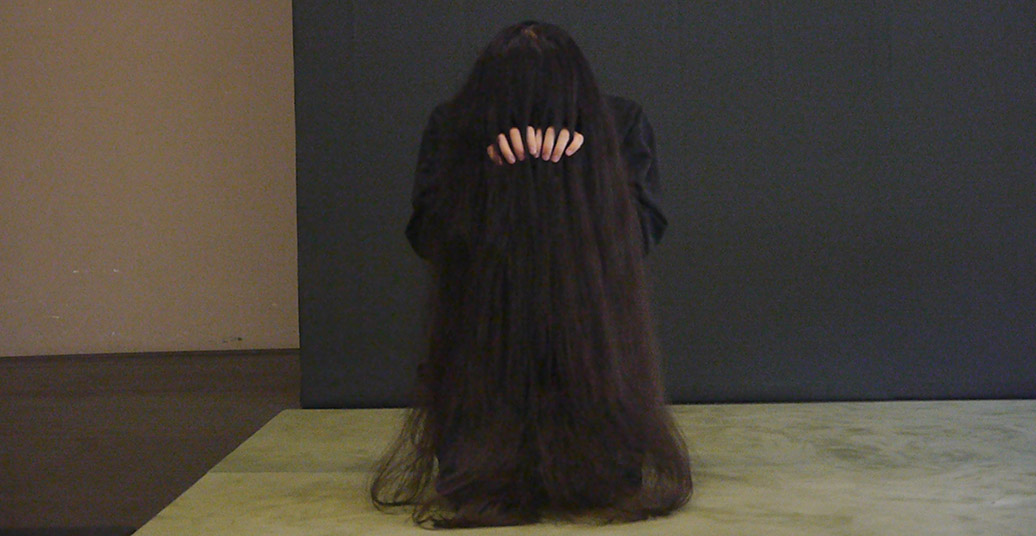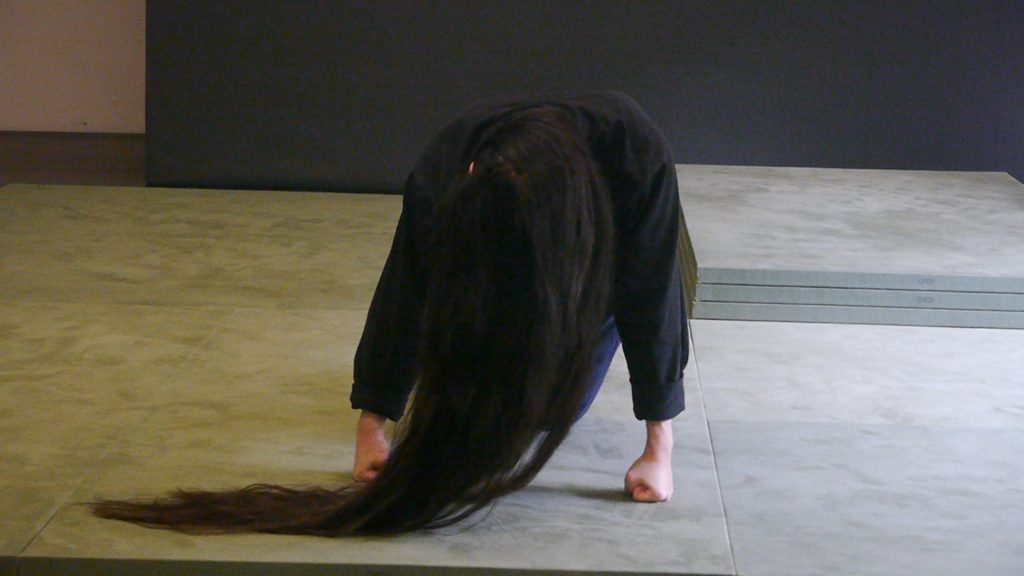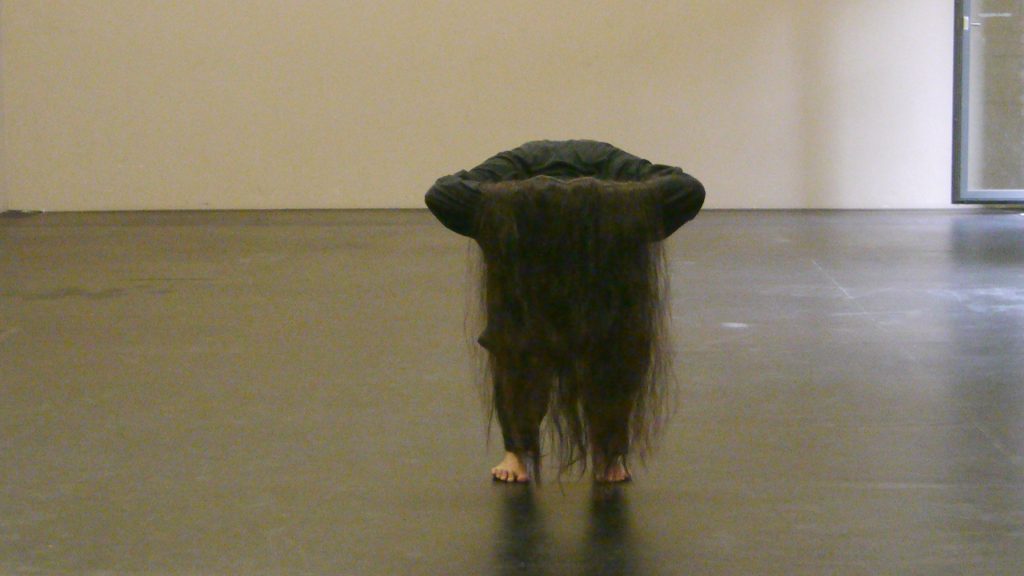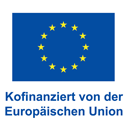The plan was for Isabelle Schad’s trilogy “Collective Jumps“, “Pieces and Elements” and “Reflection” to be shown for the first time in one stretch at HAU Hebbel am Ufer in June. She talks with Jette Büchsenschütz about contemplation, the collective, and the power emanating from interlocking bodies – and it becomes evident how relevant her pieces are today.
In early March, at the last big dance event before the lockdown, the piece “Reflection” was shown at the opening of Tanzplattform Deutschland 2020 in Munich. How have things been for you since? How are you dealing with the virus and the ongoing restrictions on your artistic practice?
Having our own space at Wiesenburg available as a production location was a blessing in disguise. Since a lot of group rehearsals were canceled, I was able to use the free hall for one-on-one training. As a result, I was able to develop three new solos over the past weeks. I had to develop two for the Sophiensæle in November anyway. I have just slided in a third one, with Japanese dancer Aya Toraiwa. When I saw Aya’s knee-long hair I knew straight away that I wanted to create something about fur with her.
So, this time has been quite a luxury for me since it has made possible work that is not production-oriented: work without deadlines, without the need to adhere to project descriptions, without having to fill out applications beforehand.
Images: Isabelle Schad, solo “Fur” with Aya Toraiwa, rehearsal photos from Spring 2020 ©Isabelle Schad
But the shutdown also raised a slew of existential questions: where do I stand? How can I reorient myself? How do I stay fit? How can I be in alignment with myself and my environment? I found this time for myself, these solo pieces in Wiesenburg, my family and friends, and to slow down really enriching. I also took more time for meditation and reflection so I could arrive more within myself – dealing with the self is so important, truly healing and contemplative. However, I really missed working with groups.
And the restrictions were of course also palpable. All our planned guest performances were of course canceled, including a Southeast Asia tour planned for right after Tanzplattform.
For five years – from 2014 to 2019 – you grappled with the question of how individual bodies could emerge in a collective. The “Collective Jumps”, “Pieces and Elements”, and “Reflection” trilogy would have been performed for the first time in one stretch at HAU this month. Was there something like an initiation moment for your intense engagement with collective bodies and community building?
I was always really interested in groups and collective practices. Thanks to a variety of workshops Goethe-Institut invited me to offer around the world, I learned a lot about what it means to build a community and find a mutual language in practice. The development of my own practice was very important. I borrowed the idea of a cellular equality from embryology of Body Mind Centering (BMC®). Starting in 2013, Aikido and Shiatsu became a more prevalent part – both are practices in which a sense of holistic being are of crucial significance. Based on these influences, I developed my own training practice bit by bit. One which continued to develop and transform in my own training. My practice consists of a fusion of what I myself am constantly learning and that which I share: give and take. Yin and yang.
The visual artist Laurent Goldring, with whom I had already collaborated on two soli – “Unturtled” and “Der Bau (The Burrow)” – was a second important influence. Laurent hinted to me that groups should be seen as the space themselves. And he recommended that I bring the bodies even closer together than in my previous group pieces. In “Collective Jumps”, our work approaches converged. At the time, I have been concerned with forms originating from folk dances, but which can also be seen as biological forms. Laurent introduced his views on amplifications, on reinforcements, with his positing on the costumes. We have been devising the principle of the amplifier together since “Unturtled”.
Can you briefly describe the development that the pieces have gone through over the years? How have your ideas about collectivity developed and changed through the years?
In “Collective Jumps” the questions in the foreground were: What is machine and what is body? And what mechanisms account for their similarities? How can the individual dive into the bigger whole, disappear into it without losing a sense of self? How can the group become an organ made out of many different, individual extremities? How can collectivity be understood as a source of enrichment for each individual rather than a loss of self? In “Pieces and Elements”, the formation of the landscape and the relationship to nature were in the foreground. The individual was given more space – an experience which the performers also described. In “Reflection”, the freedom of the individual, being the protagonist and driving motor of the whole, shifted more strongly into our focus. And the practice also changed over the course of the years. Aikido became more prominent and with it the idea of sending energy to the outside. On top of that, concrete forces that act from outside, like e.g. the revolving stage at HAU1, were affecting our movements. The level of autonomy definitely increased in “Reflection”. The aspect of awareness, of mutual respect, runs through all three works. How can we turn away from conditioning and the ego of the person in order to find a different relationship to ourselves and others? In this sense, the trilogy is surprisingly topical and it would have been interesting to show it right now.
But how does a group piece emerge, which consists neither of autonomous individuals nor of individuals subordinated to a collective?
In order to clarify the meaning of lockstep and what social system it correlates to, I made people feel and experiment with how it feels to move in the same rhythm during workshops. And then they were asked to try the exact opposite: everyone listening to his/her own rhythm. The more everyone learns to stand on his/her own, even within a common whole, the more interesting and non-representative it becomes. Pursuant to a totalitarian system, a group quickly tends to march in lockstep. Listening to oneself and concentrating on one’s own movements is the first decisive step – and always a challenge – towards real respect to oneself and one another.
Do I hear an intentionally political dimension to your work?
The work is definitely a reflection on politics and its raising of awareness – or about micropolitics, a term that I prefer to use. My work is more in line with an attitude that opposes conditioning and the bureaucratization of humanity. This attitude, which I adopt as an artist, teacher, and practitioner, is very important to me. It is about a practice of mindfulness and inner peace as well as the force, which allows healing relations(hips) within self-other, self-world to come back into focus. It is a humble practice, which permits no arrogance. I think this socio-political dimension absolutely emerges in my works. But I’m happy to refrain from this assertion. Every viewer sees what he/she sees and connects to it based on his/her own experiences and perspectives. In any case, I want my works to facilitate inner strength and contemplation and open up personal spaces for experience.
“Reflection” ends with the final choir song from Bach’s St Matthew Passion, which fills the room when the Iron Curtain comes down. It’s about the transition from grief to joy in light of the murder of Jesus of Nazareth since Christianity promises the resurrection of the mortal body: “We sit down in tears, And call to you in your grave…”. Can you say something now in hindsight about this finale of your trilogy?
The final music is an offer to be alone with oneself and the music. In “Reflection”, I was concerned with the might of the apparatus in general and the theater in particular. I was commissioned with developing a piece for HAU1, which is not a neutral blackbox but rather a very characteristic location steeped in history. A place where I e.g. could never have imagined “Collective Jumps”. The iron curtain is a symbol of this force for me. One, which the apparatus brings forth in its wake and which can be understood as an over-dimensional, if not extrinsic force, which affects us as human beings and as a society.
The music – I come from a family of musicians – offers great emotion for me and is also one of the leitmotifs in Pasolini’s film “The Gospel According to St. Matthew”. With this work, I dealt for once with less abstract issues, and with the more concrete motifs that have accompanied us in the history of representation from time immemorial. I wanted to offer an ending that basically concerns or could concern everyone. The music is to be understood as a suggestion, which everyone can use to reflect back on their own (hi)story. Though we are together in a space, each person is also there alone. And I can’t deny it: a spiritual dimension has definitely become more prevalent in my life and in my work.
Showings of the solo “Fur” with Aya Toraiwa are scheduled on 31 July and 1 August 2020 at Wiesenburg.
As a part of #HAUonline , HAU Hebbel am Ufer published Isabelle Schad “Collective Jumps” / “Pieces and Elements” / “Reflection” – Lectures from the Trilogy (2014–2019). A Collection from Elena Basteri (German text contribution on HAU3000, 10 June 2020).
English translation by Melissa Maldonado






